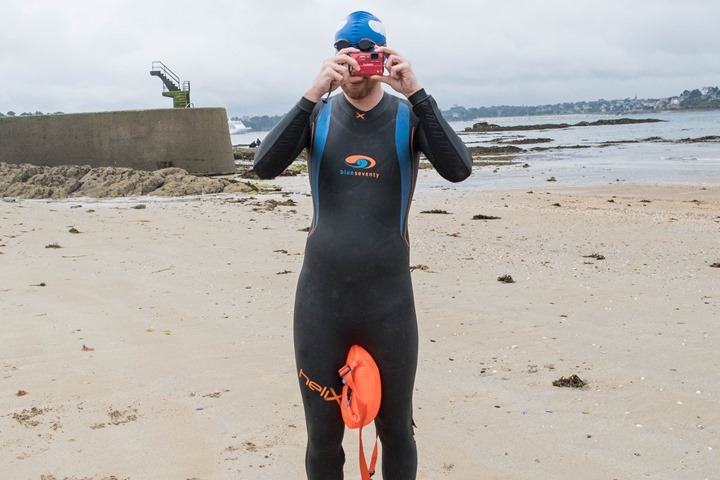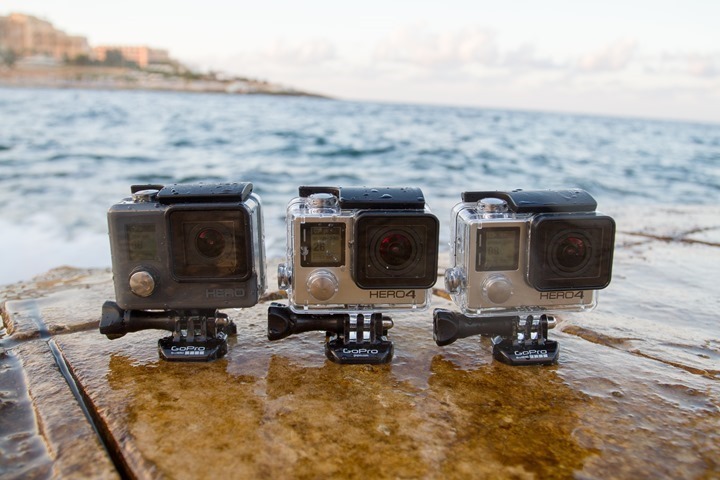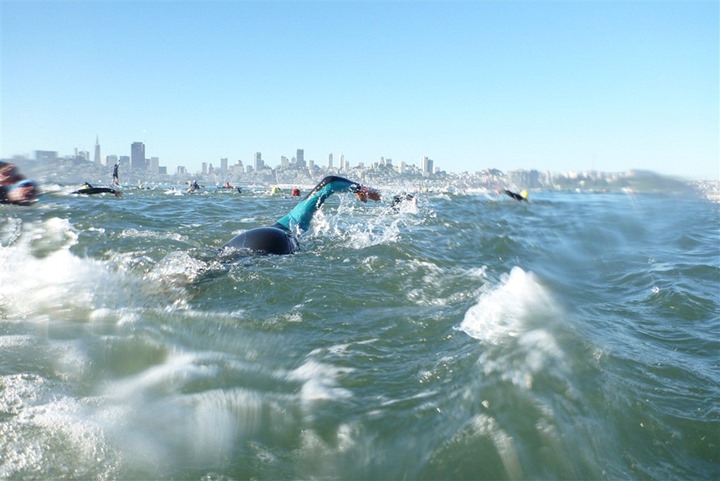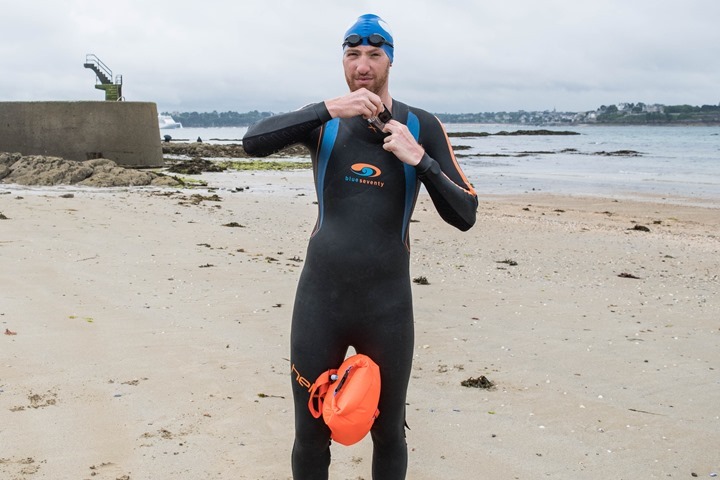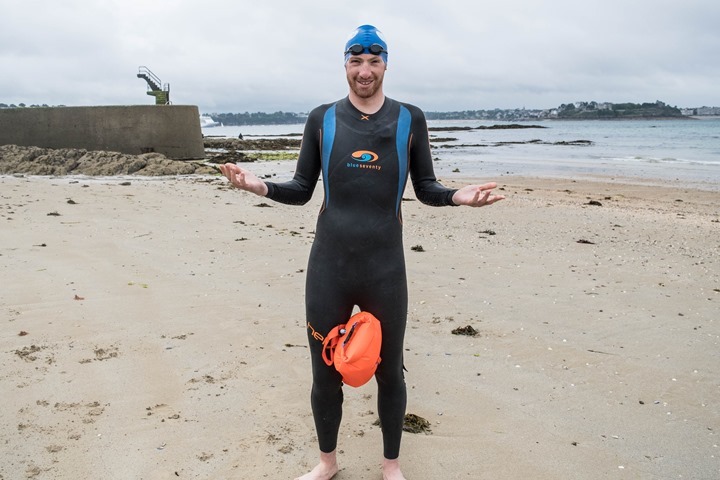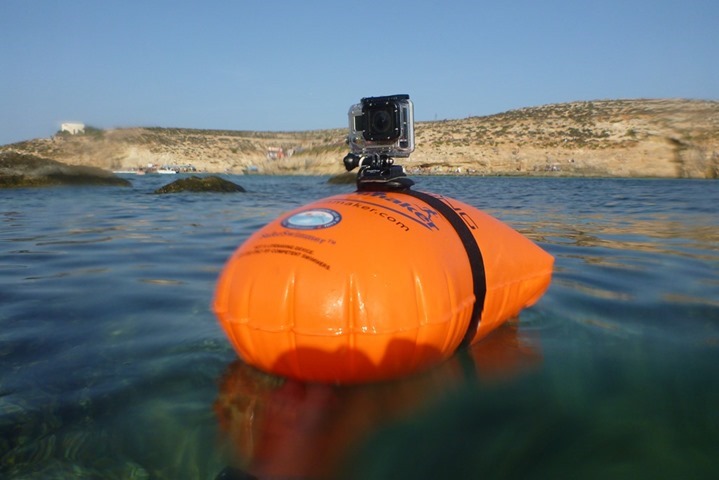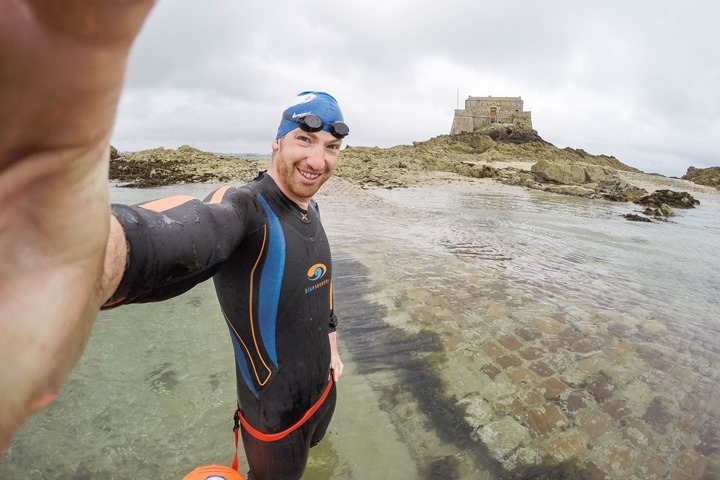(Both The Girl and I are incredibly sad about the attack that occurred in Nice last night. Bastille Day – La fête nationale- is our favorite day of the year here in France, and is incredibly special on so many levels. It’s all about community and enjoying the day with not just friends and family, but also people you’ve never met. It’s as much about celebrating French unity as it is about celebrating your neighborhood and those around you. It breaks our heart to see what happened yesterday on such a special day in such a special place to so many innocent people.)
As regulars know, I take photos across pretty much all my activities…swim…bike…run…cake delivery…you name it! But there’s one activity that seems to cause the most confusion and questions: Openwater swimming.
Without fail, anytime I post a picture during an openwater swim (training or racing) I get a tidal wave of questions on what camera I use and where I put the camera. So I’m here to give you the answers. And given it’s a Friday, we’ll keep this semi-quick!
For years I’ve been taking photos during openwater swims, both training and racing. Typically for racing I usually take them at the very beginning right before the starting gun, and then again usually somewhere in T1 (Transition 1), running from the water to my bike rack. For training, it just depends on if I find something interesting along the way. However, my technique is largely the same.
First let’s talk cameras. I almost always use a GoPro Hero4 Silver. I do this for two reasons: First, is that it’s my favorite action cam. But second is that it has a screen. Oh, and third, it’s not so small that I’ll lose it fumbling around underwater (looking at you Hero4 Session).
In the past I’ve also used a number of small point and shoot cameras from the Pentax and Panasonic Lumix waterproof series. I find they actually tend to produce better individual photos than the GoPro’s do, but the GoPro gives me more versatility. In unrelated news, I ran over one of my last little Pentax cameras with a rental car in San Francisco. Actually, technically I didn’t run over it – but rather the car behind me did after it flew off my roof. I was merely an accessory.
Here’s a photo I took from one of the point and shoot ones camera during the Escape from Alcatraz triathlon:
Anyway, so the first step is using a waterproof camera that’s easy to utilize underwater. Next, remember to lick the camera lens. Seriously, lick it. It keeps the water droplets from pooling on it when above water, and is cheaper than buying anything designed for that purpose. It’s a well known trick of any frequent aquatic GoPro user. But to be clear: You’re licking the outside of the GoPro lens case, not the actual GoPro lens inside itself.
Next is finding a place for that camera while I’m actually swimming. I put the camera in precisely one of two spots. For swims with wetsuits, I simply slide the camera a few centimeters down the neckline of my wetsuit. This way it’s out of the way, but also easily grabbable. Here:
If the camera has a small strap on it, I’ll usually leave the strap hanging out of my wetsuit – simply to make it easier to grab. But I never really have issues with the cameras going anywhere, as my wetsuit is snug. If your wetsuit is so loose that your camera slides around, then…you need a new wetsuit.
What about non-wetsuit swims? For that I place it on the leg of my swimsuit (jammer or triathlon style). I find that jammer/tri style swimsuits are ideal for holding the camera. As long as the swimsuit is snug it’ll easily hold it. I just slide it a few inches up the swimsuit. This way I can easily feel for it on any swim stroke, since my hand goes right by my thigh.
For women without a wetsuit/trisuit…umm….I don’t have a great solution there.The Girl when wearing a one-piece has occasionally just placed it down the top and that’s held fairly well. And on a two-piece she’s used the little string on some cameras to just tie it on the side of the bottoms. Not ideal, but works in non-rough water. Perhaps you could use a simple SPIbelt and then just wear that if you wanted it along. That would keep it relatively streamlined.
Oh, and solving one last curiosity – one time I also tried putting a GoPro on my swim buoy, to try and capture both a time-lapse and live broadcast of the swim. I did this during a week long trip to Malta. Turns out that makes the swim buoy top heavy and then it flips over…giving you more of an underwater view. Plus, sticky mounts come off there near instantly. So you have to use a strap of some sort (I used a Polar HR strap and put the sticky mount on top of the transmitter pod). I’m sure someday I’ll try this method again.
So there ya have it – everything you ever wanted to know about how I take photos during openwater swims.
Thanks for reading, and have a great weekend!
(Note: I tend to keep this page here updated with all my photography gear…though, it looks like it needs a few items refreshed. Will get that knocked out today!)
























